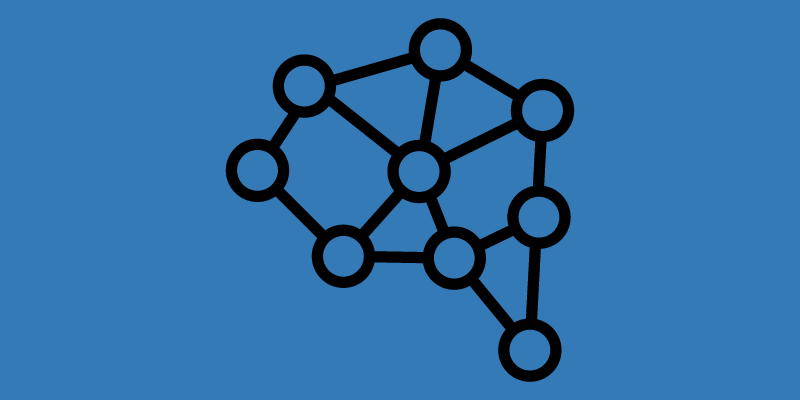Artificial Neurons, Activation Functions, and Backpropagation
In the realm of artificial intelligence, neural networks stand as a pinnacle of innovation, mimicking the intricacies of the human brain to revolutionize pattern recognition and decision-making. In this article we will discuss neural networks and their fundamental components, explore the role of activation functions, and the powerful technique of backpropagation.
The Structure of Artificial Neurons
At the heart of neural networks lies the fundamental building block: the artificial neuron. These digital counterparts of biological neurons process and transmit information within the network, enabling the model to learn and generalize patterns. The structure of an artificial neuron is multifaceted, comprising essential components:
- Inputs: Artificial neurons receive multiple inputs, each multiplied by a corresponding weight value. These inputs represent features or attributes of the data
- Weights: Weights function as modulators, controlling the strength of input signals. These weights undergo adjustment during the learning process, enhancing the network’s ability to capture patterns
- Summation Function: The weighted inputs are summed, and a bias term is added to the sum. This aggregated value represents the neuron’s total input
- Activation Function: The total input is then passed through an activation function, which decides whether the neuron should “fire” or not based on the input’s magnitude
- Output: The output of the activation function is the neuron’s final output, which is transmitted to other neurons in the subsequent layers
Activation Functions as Decision Makers
Activation functions are the gatekeepers of information flow within neural networks. They introduce non-linearity to the model, enabling it to capture complex relationships and make informed decisions. Several activation functions are commonly used:
- Sigmoid: Often the go-to choice, the sigmoid function maps input values to a range between 0 and 1. It’s well-suited for binary classification tasks but can suffer from the vanishing gradient problem during training
- ReLU (Rectified Linear Unit): This function replaces all negative input values with zeros while leaving positive values unchanged. It’s computationally efficient and mitigates the vanishing gradient issue, making it a staple in many deep networks
- Leaky ReLU: A variant of ReLU, leaky ReLU allows a small slope for negative values, preventing complete saturation of the neuron during training
- Tanh (Hyperbolic Tangent): Similar to the sigmoid, tanh maps inputs to a range between -1 and 1. It’s zero-centered and thus less prone to vanishing gradients
- Softmax: Primarily used in the output layer for multi-class classification, softmax converts input scores into probabilities, aiding in selecting the most probable class
Navigating Complexity and the Vanishing Gradient
Activation functions play a pivotal role in ensuring the success of neural networks. They infuse non-linearity into the model, enabling it to capture intricate patterns that linear functions cannot discern. However, the choice of activation function also involves considerations of gradient vanishing or exploding during training, which can impede convergence.
While activation functions enhance network capabilities, they can introduce challenges. The vanishing gradient problem occurs when gradients become infinitesimally small during backpropagation, hindering weight updates, and slowing down convergence. Certain activation functions, like sigmoid and tanh, exacerbate this issue due to their restricted output range. Leaky ReLU and its variants, along with careful initialization techniques, can alleviate the vanishing gradient dilemma.
Selecting the Right Activation Function
Choosing the right activation function depends on the nature of the problem, architecture of the network, and the desired characteristics of the model. For instance, sigmoid and tanh might work well in shallow networks or tasks that require probabilities, while ReLU and its variants are preferable for deeper architectures.
Empowering Learning through Backpropagation
The journey into neural networks isn’t complete without understanding the backbone of their training process: backpropagation. This technique, fundamental to deep learning, involves fine-tuning the network’s weights through iterative optimization. Here’s how it works:
- Forward Pass: During the forward pass, data travels from input layers to output layers. Activations and predictions are calculated layer by layer
- Loss Calculation: The network’s performance is measured using a loss function, which quantifies the difference between predictions and actual values
- Backward Pass: Backpropagation begins by computing gradients of the loss with respect to the network’s weights. This process is carried out using the chain rule of calculus
- Gradient Descent: Gradients indicate the direction and magnitude of weight adjustments needed to minimize the loss. Gradient descent algorithms are employed to update weights iteratively
- Optimization: Through successive iterations, backpropagation guides the network’s weights toward values that minimize the loss function. This leads to improved predictions and model performance
The Power of Neural Networks and their Future
The intricate interplay of artificial neurons, activation functions, and backpropagation forms the bedrock of neural networks’ power. These components collaborate to imbue machines with the ability to learn patterns, make predictions, and excel in a wide array of tasks. Neural networks have redefined industries, from healthcare to finance, and continue to push the boundaries of what AI can achieve.
As we delve deeper into neural networks, we’re merely scratching the surface of their potential. Researchers are continually innovating, exploring novel activation functions, optimizing backpropagation, and devising architectures that suit specific tasks. The evolution of neural networks is a testament to human ingenuity and the unyielding quest to replicate and augment the power of the human brain
